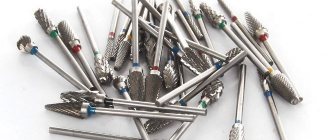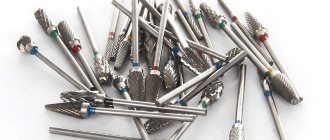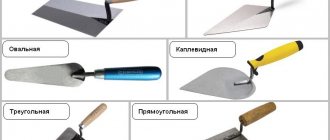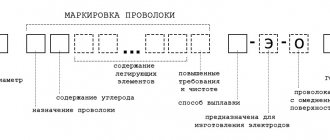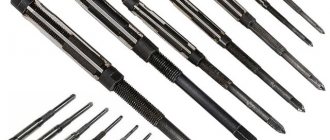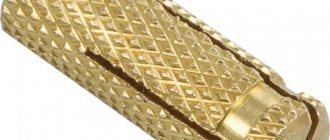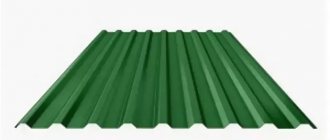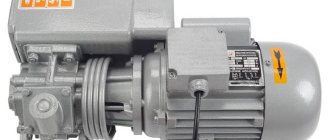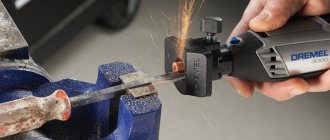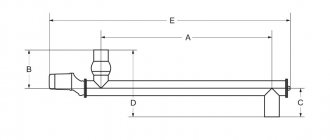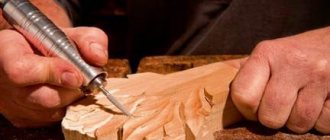Wood chips are very popular material, which is suitable for various applications.
It is obtained mainly as waste from wood processing.
The types of wood chips for different applications, which are determined by the shape, size and type of wood, can vary greatly.
In this article we will talk about the various equipment that is used to produce wood chips.
We will also talk about the influence of the type and configuration of equipment on the characteristics of chips.
Differences between woodchips and sawdust and shavings
To choose the right equipment, you need to understand how wood chips differ from other types of wood .
We have already talked about sawdust and shavings, so we will continue to talk about the differences between wood chips.
It is generally accepted, although this is not stated in any regulatory document, that sawdust is very fine crushed wood , the average length of each particle is 1–2 mm, and the width and thickness are tenths of mm.
The chips are somewhat larger , the average length is 20–30 mm, and the thickness can reach 1 mm. Anything that is noticeably larger than the average chip in size (with the exception of wood wool) can be classified as wood chips.
Therefore, changing the settings of the equipment with which chips or shavings are obtained makes it possible to produce one or another product. Because of this, in stores the same unit is called either a machine for producing chips or a machine for producing chips.
However, there is another difference between these products. It lies in the fact that chips, regardless of size, appear as a result of cutting or crushing wood , which is why they receive a certain shape.
Therefore, when the machine produces shredded wood using this method, which is more similar in size to chips, formally these products will need to be considered chips.
Types of machines for producing smoking chips
In large smoke chip production plants, special lines are installed. They have high performance.
The set of equipment for the production of smoking chips includes:
- Shearing machines or crushers.
- Bunkers for collecting wood chips and conveyors.
- Boilers or chambers or drum dryers for wood.
- Gas generators.
The choice of equipment depends on the need for smoking chips. Installations designed for its production can also produce other types of chips. For example, decorative.
Equipment for the production of
Equipment that is suitable for producing wood chips includes :
- drum chipper;
- rotary chopper;
- hammer crusher;
- shredder
Drum chipper
This is a multifunctional unit that is used both for producing wood chips and for producing various types of shavings.
The basis of this machine is a drum with a diameter of 30–150 cm, on which 4–8 cutting and 4–20 separating knives are installed .
In addition, the machine is equipped with a drive that feeds the wood to the drum and prevents it from flying out.
If, after separation from the total mass of wood, the chips are too large in size, then the knives drag them along the sieve until they either split or are cut by additional knives mounted on the body.
The size of the finished product depends on:
- drum diameter;
- number of knives;
- wood feed speed;
- drum rotation speed;
- angle of entry of knives into wood.
The larger the diameter of the drum, the more time passes between cuts at the same rotation speed, which means the thicker the cut material will be.
In the same way, the thickness of the material is also affected by the number of knives , so if it is necessary to obtain thick chips, half of the knives are removed (every other one, so as not to upset the balance).
feed speed and drum rotation speed on cheap machines are not adjustable , but on homemade or expensive devices this is possible, thanks to which you can change the size of the chopped wood within a wide range.
The angle of entry of the knives into the wood determines the size and shape of the finished product. When it is 90 degrees, that is, the wood fits right in the center of the drum, then the cut occurs strictly along the grain.
Moreover, first, separating knives act on the wood, cutting deep vertical stripes in it, then cutting, separating a thin layer , which immediately falls apart into strips , the width of which is equal to the distance between the separating knives.
Due to their small thickness, these strips break into narrow fragments corresponding to annual rings, because the strength of the connection of the wheels to each other is much lower than the strength of the wood inside one ring.
As the angle of entry of the knives into the wood decreases, the shape of the final product also changes.
After all, the smaller the entry angle, the greater the length of the annual layer caught in the cut fragment, which means the greater the width of the piece separated from the cut plate.
In this case, the thickness of each piece turns out to be noticeably less than its width , due to which the shape of the finished material fully satisfies the requirements for wood chips for the production of wood concrete.
Therefore, by changing these parameters, it is possible to obtain both wide chips suitable for the production of OSB and chips similar to rectangular chips for smoking or infusing alcohol.
The drum chipper can process any long wood whose diameter does not exceed the throughput capacity of the unit.
Therefore, most often the machine is used for chopping round wood, that is, debarked or unbarked trunks and thick branches.
In addition, the machine is also suitable for shredding long scraps , however, there is a limitation on the minimum thickness due to the peculiarities of the feed mechanism.
This unit is not suitable for processing used boards and logs , because an undetected nail will damage the knives and sharply reduce the efficiency of the mechanism.
Rotary chopper
The basis of this device is a heavy and thick rotor , which acts as a flywheel and is a platform for installing knives (usually 3 pieces).
The wood is fed through a special chute at an angle of 50–80 degrees, which increases the width of the cut annual rings, and hence the size of the crushed product. A counter knife is installed between the rotor and the housing on the wood entry side , facilitating the operation of the device.
After all, a chopping knife moving from above and a counter-knife fixedly mounted on the body create an analogue of scissors and not only increase cutting efficiency, but also eliminate wood from being pulled under the rotor and jamming of the unit.
Typically, such a grinder is used in tandem with a hammer crusher, installing them in a common housing. This combination completely eliminates the plates with several undivided growth rings, resulting in a needle-shaped finished product.
If there are no strict requirements for the shape and width of the chips, then a rotary chopper is used without a hammer crusher.
The main purpose of this device is processing cut branches , which is why such devices are often called garden shredders.
The unit is also suitable for processing thin trunks and various scraps of any length, the only limitation is related to the cross-section of the wood. After all, the gutter rests on a window with a relatively small cross-section (from 10x10 cm for garden ones and up to 30x30 cm for industrial ones).
Hammer chip crusher
This apparatus consists of a shaft with support disks, between which there are fingers that hold hammers, that is, rectangular steel plates that rotate freely around their axis.
Also, fender plates are welded to the shaft.
When the rotor disk has completely spun and its rotation speed has become constant, the hammers , due to the action of centrifugal force, form a three-rayed star .
Any change in the rotation speed also leads to a change in the position of the hammers, so they hit the impact plates designed for this purpose either in front of them or behind them. Moreover, the impact force is sufficient to separate the wood along the boundary of the annual rings, but not sufficient to damage the fibers.
Typically, such a crusher is used in conjunction with a rotary shredder , because the impact energy of the fingers is not enough to separate large fragments of wood.
Therefore, most often a complex consisting of a shredder and a crusher is used for the production of wood chips.
Indeed, despite the extremely low cost compared to a drum machine or shredder, such a complex produces chips that, in their size and shape, are ideal for the production of wood concrete.
Shredder
Devices of this type consist of a shaft with special hooks or teeth that pass through grooves intended for them. When wood of any shape enters the work area of the shredder, the hooks crush and break it into pieces the width of which is equal to the width of the hooks.
Twin-shaft units are more efficient , because each shaft is both moving in one row and grooves in another row.
Thanks to the enormous torque with which the shaft rotates, the shredder easily crushes wood of any species .
Even a nail caught under the hooks does not affect their condition, because the shredder’s teeth do not cut or plane, but crush the wood, so small defects on their surface do not affect the result in any way.
More expensive and modern models of shredders are equipped with various systems that correctly position the wood, because the size and shape of the chips directly depend on the position of the wood relative to the shafts .
When the wood fibers are located along the shafts, crushing occurs at the joints of the rings, and the chips are of maximum quality. If the material enters the chipper as it turns out, then the chips turn out to be of different types.
Models of wood chippers and their prices
The cost of complex units, such as drum chippers or shredders, depends on many factors , so in the table we have included links to the websites of the manufacturer or seller, where you can find out information about the price of wood chippers depending on the desired configuration:
| Unit name | Description | Manufacturer or seller website |
| Skorpion 500 EB | Drum crusher from Teknamotor. It is equipped with a three-knife drum and is capable of producing 25-34 m3 of chips measuring 10–30 mm in an hour. Equipped with an electric motor with a power of 45–55 kW (depending on configuration). Capable of processing not only trimmings and branches, but also trunks 15 cm thick. | www.teknamotor.by |
| MRB 110 | Russian drum chipper designed for processing flat waste and round non-commercial wood with a diameter of 300 mm. The chip size is adjustable within 20–60 mm. The total productivity of the unit is 12–15 tons (not cubic meters) per hour, while the machine consumes 127 kW of electricity per hour. | www.stankoff.ru |
| RM-400 | A modern drum chipper of medium productivity, suitable for processing various wood waste and round timber with a diameter of 140 mm into chips. The productivity is 15–45 m3 of chips per hour, and the ability to change the wood feed speed greatly expands the possibilities for regulating the size and shape of chips compared to conventional drum chippers. | www.stankoff.ru |
| D630 ICE | A fairly powerful wood chip crusher that combines a rotary chopper and a hammer crusher. This model is suitable for use when there is no electricity and is equipped with a Chinese Lifan engine. Can also be connected to the power take-off shaft of a tractor or truck. The productivity of the device is 5–10 m3 of wood chips per hour. | www.scheporez.ru |
| ID-600M | Medium power rotary hammer shredder, ideal for creating fuel, process or wood chips. During operation, it consumes 19 kW of electricity per hour and during this time produces 3–8 m3 of wood chips. | ruarbolit.ru |
| OWL Shch-350 | One of the cheapest rotary hammer wood chippers with a productivity of 2–7 m3 per hour. It is equipped with a 5.5 kW motor, so it cannot work for a long time without a break. Upon request, it is possible to install a more powerful electric motor or internal combustion engine. | www.promrostplus.ru |
| UNTHA LR630 | A modern single-shaft shredder with a productivity of 1–2 m3 of chips per hour. Depending on the configuration, it consumes 11–19 kW per hour. Equipped with a foreign object detection system that stops the device in case of danger. | www.stanki.ru |
| ShDP-5D | Russian twin-shaft shredder with a power of 30–45 kW and a productivity of 1–5 m3 per hour. Can be equipped with a hammer chopper. In the basic version, the size of the chips is 5–15 cm, but if equipped with a hammer chopper, then the size of the chips is 5–50 mm. | severprominvest.ru |
| RRM-2/9 | Twin-shaft shredder with a power of 150 kW, designed for processing large volumes of wood. Productivity is 1–3 tons per hour, depending on the type of wood and the configuration of the apparatus. Due to the absence of complex electronics, this wood chipper is relatively inexpensive. | bmpa.ru |
Pros and cons of woodchip machines
Industrially produced machines for wood production differ from each other in power and operating principle. Disc crushers have the simplest design and lowest operating efficiency. Despite this, they are currently the most in demand. The advantage of such equipment is the ease of repair and maintenance.
Drum crushers are considered the most efficient in operation. They have a large loading window into which an impressive amount of wood prepared for production can be placed. Such equipment is suitable for processing absolutely any type of raw material. It rarely fails.
Chip production line
Screw equipment is least suitable for the production of smoking chips. It crushes the wood into too small fractions. All types of equipment can have their own engine or be powered by other equipment. The latter version of the equipment is more expensive to purchase and operate.
